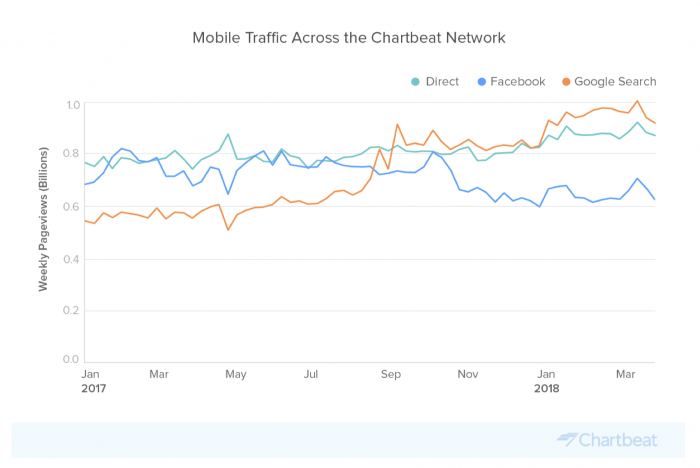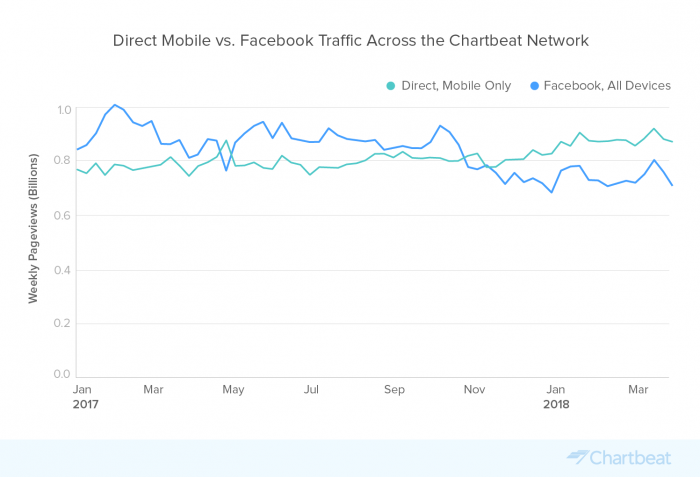Traditionally — as much of a tradition as there can be in the online analytics world — people accessing sites via mobile has mostly meant people arriving from social media. But now, post-Facebook algorithm changes, the number of mobile readers visiting news sites directly has surpassed the number visiting from Facebook.
(Reminder: Starting in mid-October, Facebook began tweaking the News Feed algorithm away from Page content — a.k.a. many publishers — and toward “meaningful interactions.” Some publishers have experienced such a significant drop in traffic that it contributed to the shuttering of the site or layoffs. But many of those in those affected buckets relied on Facebook’s algorithm as the core of their business model. Not the sturdiest choice.)
New data from Chartbeat shows that, while Facebook traffic has been (unsurprisingly) declining since the October 2017 change, both Google Search and direct traffic have been steadily climbing. (Note: we should clarify that this is in regards to mobile readers “arriving to a site (website or app) directly to the homepage or section front” more frequently than social platforms like Facebook.)

This less-traffic-from-Facebook trend goes beyond mobile, though. Facebook’s referral traffic across all devices has dipped below direct traffic only on mobile.

Basically, mobile traffic to news sites doesn’t have to dry up because Facebook is shifting its users’ attention elsewhere. But now the stakes of taming multiple algorithmic beasts at once is even higher.